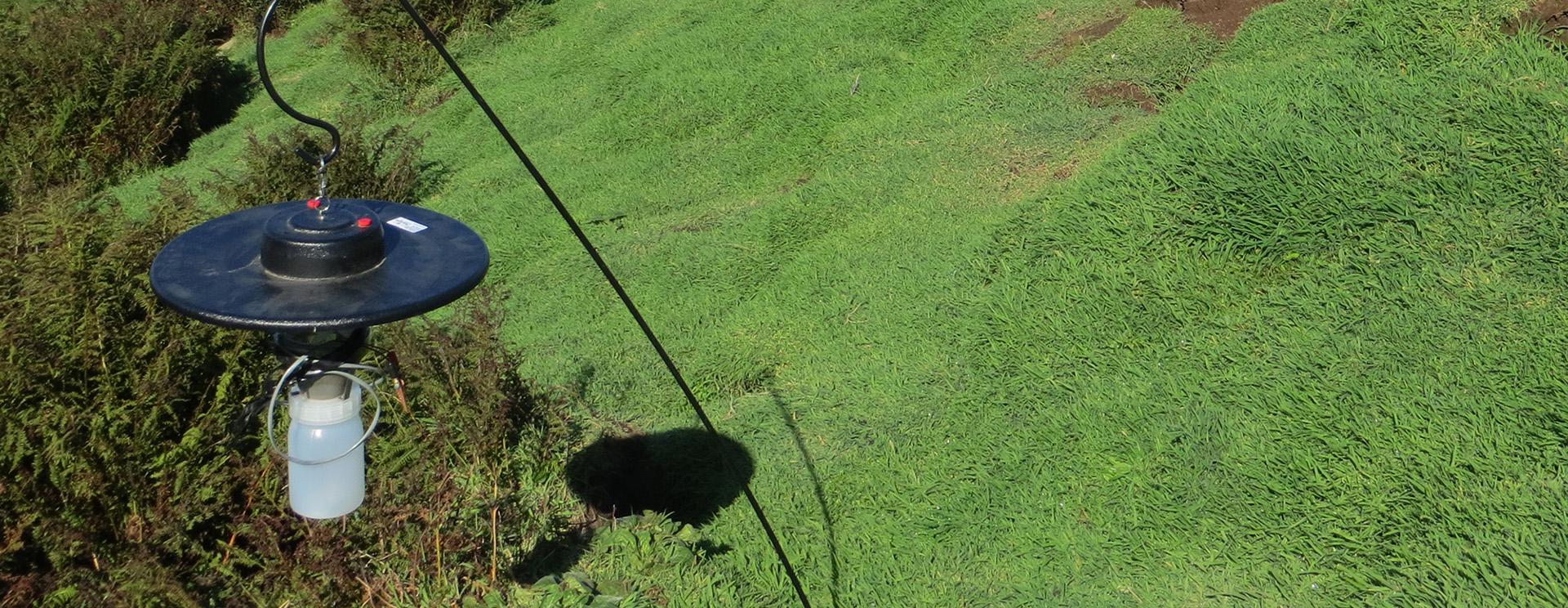Culicoides species composition and abundance on Irish cattle farms: implications for arboviral disease transmission
Following the emergence of Schmallenberg virus (SBV) in Ireland in 2012, a sentinel herd surveillance program was established in the south of Ireland with the primary aim of investigating the species composition and abundance of Culicoides on livestock farms in the region.
Ultraviolet-light trapping for Culicoides was carried out on 10 sentinel farms. Each site was sampled fortnightly over 16 weeks (21st July to 5th November 2014). One Onderstepoort Veterinary Institute UV light trap was run overnight at each site and catches were transferred immediately into 70% ethanol. Culicoides were morphologically identified to species level. Collection site habitats were characterised using the Phase 1 habitat survey technique (Joint Nature Conservation Committee).
A total of 23,929 individual Culicoides from 20 species was identified, including one species identified in Ireland for the first time, Culicoides cameroni. The most abundant species identified were Culicoides obsoletus/Culicoides scoticus (38%), Culicoides dewulfi (36%), Culicoides pulicaris (9%), Culicoides chiopterus (5%) and Culicoides punctatus (5%), comprising 93% of all Culicoides specimens identified. Collection site habitats were dominated by improved grassland and a combination of broadleaf woodland and native woodland species.
The most abundant species of Culicoides identified were the putative vectors of bluetongue virus (BTV) and SBV in northern Europe. Their presence and abundance demonstrates the potential for future transmission of arboviruses among livestock in this region.

